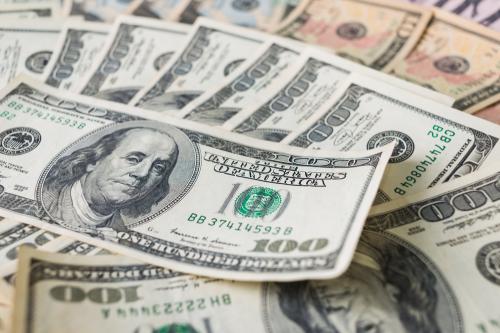A previous version of this piece originally appeared in the Australian Financial Review on March 13, 2019.
There is currently a popular debate on how to stimulate economies that are stuck with low productivity, low real interest rates, and a large amount of public debt. Proponents of an old idea in new clothes – modern monetary theory (MMT) – argue that central banks can solve these problems by buying large amounts of government debt and increasing the money supply. Advocates argue that the stimulus to demand would cause firms to unleash investment and produce a long sustainable economic expansion. This can only be described as a classic free lunch.
Free lunches have a long tradition in policy debates. They are politically popular and have recurred many times in the twentieth century and before. The experience with all economies that have swallowed the particular free lunch proposed by MMT enthusiasts is that it is very costly, and it can take a long time before unsustainable pressures eventually cause a disastrous outcome. The evidence on approaches like those proposed by advocates of MMT is that it always results in hyperinflation, massive social and economic destruction, and a crisis, followed by the imposition of more conventional economic policies. All existing experience– Venezuela today; Zimbabwe in 2008; Yugoslavia in 1994; Hungary in 1946; Greece in 1944; Wiemar Germany in 1923 — demonstrates the large costs.
Is it possible that traditional economics has missed something? Is it possible that this time MMT will perform differently?
When a government spends more than the revenue it generates, it usually finances its budget deficits by issuing government debt. Debt is a promise to repay lenders at some time in the future, for example by cutting spending relative to revenue or by raising revenue relative to spending. Most taxes that governments use to repay typical debt, such as income or profit taxes, are transparent. In contrast, the “tax” that usually finances unsustainable deficits and exploding government debt is the inflation tax, i.e. the real decline in the value of money held by the public that arises when prices rise more quickly than the amount of money that people hold. Inflation also arises when central banks print large amounts of money in excess of the capacity of the supply side of the economy to produce additional goods. More money chasing a limited supply of goods leads to rising prices.
John Maynard Keynes was an advocate of such money-financed fiscal expansions to smooth the business cycle. Smoothing fluctuations in private demand with temporary government demand financed by printing money makes sense. The problem with the MMT is that it is marketed as a way to raise the growth rate in the economy in the face of persistent deficits and high levels of debt for no apparent cost.
The reality is that eventually someone must pay for fiscal deficits. However, the long lags between a massive run-up in debt and the eventual crisis it creates make debt tempting for politicians. I know of no example of a country that has pursued money-financed fiscal deficits and then transitioned back to more-conventional policies once the economy recovered.
Examples abound in which printing money to solve a fiscal debt problem hasn’t worked. There are no examples that I am aware of in which MMT has worked. It is a theory with no practical relevance.
Global economic challenges in 2019 involve a complex mix of many factors including: adjustments to demographic slowdowns; a decline in productivity growth; threat of trade wars; and a real concern about the scale of public and private debt and the implied future tax liabilities. Printing money to replace excessive government borrowing can do little to improve these fundamental problems, and it is likely to make things worse.
There is a good argument for governments to temporarily finance investments that earn a much higher rate of return than the current low and negative real interest rates. There is also a role for governments to smooth business cycles. These arguments are completely different to the ideas being proposed by advocates of modern monetary theory that printing money to replace the huge quantities of government debt in the world economy is a free lunch.




Commentary
Op-edIs modern monetary theory too good to be true?
March 12, 2019